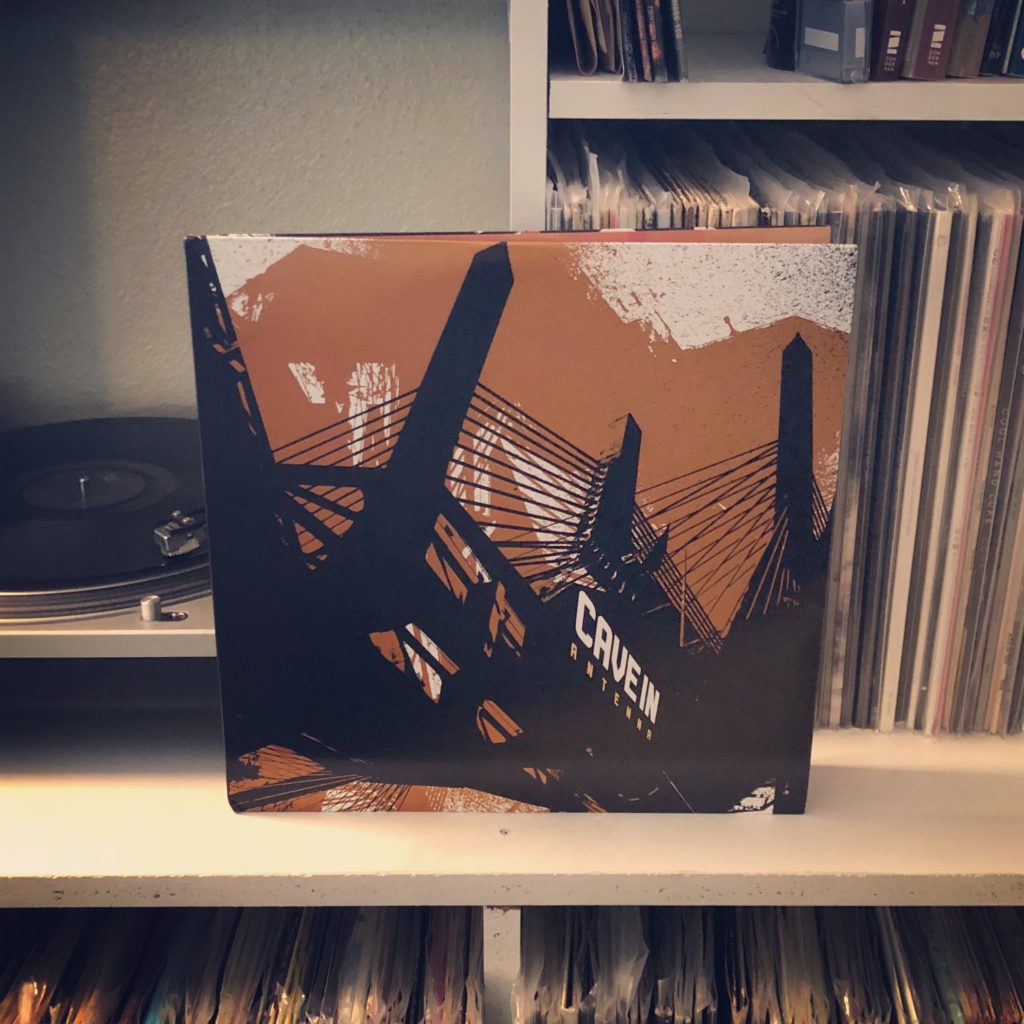
Of all of the chameleonic reinventions across the history of recorded music, few groups were as mercurial as Cave In.
And while Antenna might not be the biggest left turn they’ve ever taken, it’s certainly the furthest end of their creative spectrum, leaning heavier on space rock and alternative than ever before. But there’s still plenty of metal heaviness to give these songs some real heft.
By this point, surely no one was expecting that they would return to their metalcore roots. They were three years from the spacey Jupiter. They released the pastoral Tides of Tomorrow before signing to RCA to put out Antenna, their only major-label release.
Antenna is a point of some contention among Cave In fans. Many wrote them off as sellouts. I’ve seen some people dismiss it as generic radio alternative—which I couldn’t disagree more with. But the accusations make sense. They toured with Foo Fighters after this. The rapid first single, “Anchor” has a number of late-90s/early-00s tropes (I probably saw it on Fuse TV as a teenager, but ignored it). “Inspire” takes the Radiohead comparisons they’d attracted since the Create Eclipses EP with a heavier interpretation of the “Paranoid Android” riff.
Paired with Tides, this record is proof that they had completely abandoned their metalcore roots. And if that’s important to you, then yes, you will probably hate this record. But for someone who couldn’t get more than two songs into White Silence, Antenna is just what the doctor ordered. I wasn’t interested in Cave In at all until a friend of mine described this album as Deftones-meets-Rising Tide-era-Sunny Day Real Estate. I was hooked from the first listen, and—as you can tell looking through the archives—it didn’t stop at Antenna.
And true, this might not be the best Cave In record. There are a few moments on here that lean a bit too far into cliche early-00s alternative rock. I could do without “Rubber and Glue,” “Penny Racer,” and even “Anchor,” if we’re real honest.
But barring those three tracks—which aren’t even that bad—the rest of the album is incredible. From the opening strains of “Stained Silver” to the closing noise explosion of “Woodwork,” Antenna offers up some of the best basslines, guitar tones, and atmospheric soundscapes ever.
“Seafrost” is driven by a looping bassline untethered to chord changes as ambient guitars swirl in the upper atmosphere before collapsing into several minutes of oscillating delay, feedback, and Stephen Brodksy’s warped voice. The mournful “Youth Overrided” rides a tight, poppy drum beat into soaring choruses. “Joy Opposites” is a crushing love song that doesn’t sound like one. “Beautiful Son” pairs a strumming acoustic guitar with an atmosphere of molten guitar noise. “Breath of Water” is darkly anthemic, as celebratory as it is mournful.
And in this brooding, midtempo range, Cave In absolutely thrives. The best moments of Antenna are among the most stunning moments ever put to tape. This might not be the only album to mix these elements together, but on Antenna, they did it better than just about anyone.